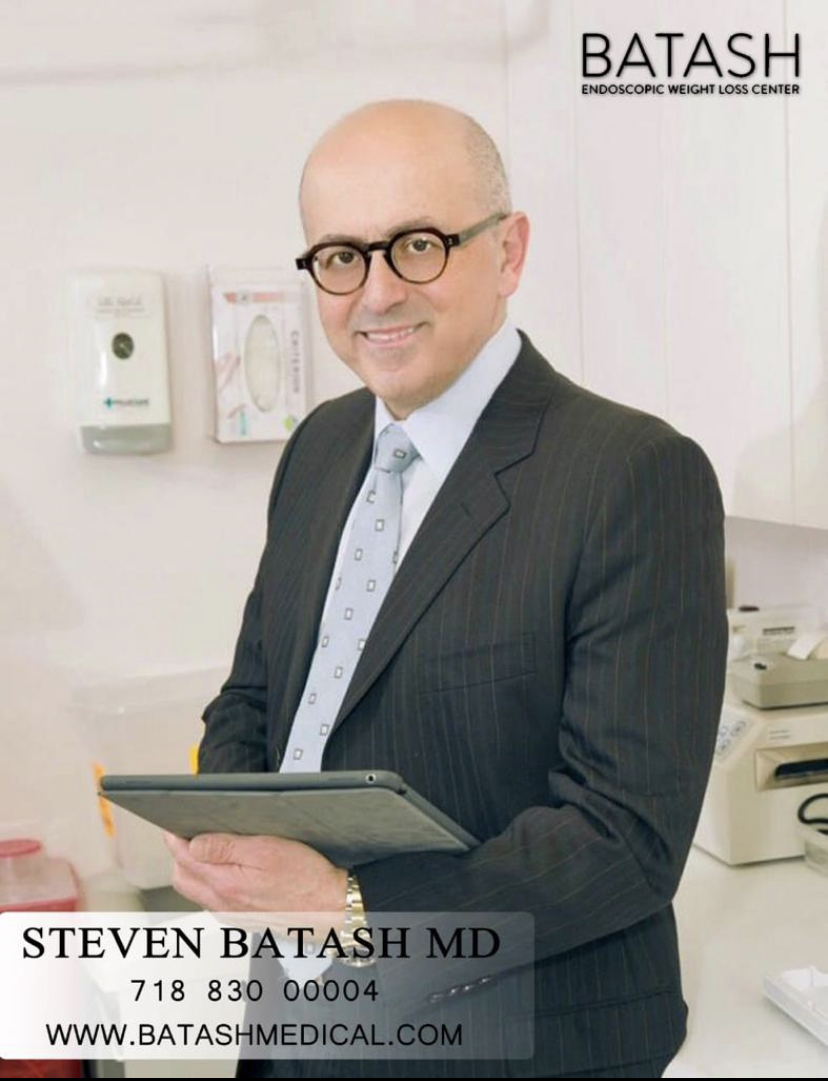Health
Dr. Steven Batash MD offers custom, non-surgical weight loss solutions with rapid results

As one of the world’s leading experts on non-surgical weight loss, Dr. Steven Batash MD believes that shedding unwanted weight is more than just a matter of willpower. Studies show that many efforts to lose weight through diet, restriction, and extreme lifestyle changes will only backfire long term because of their negative mental, emotional and physical effects. When the desired weight-loss is not achieved, oftentimes people blame themselves thinking they cannot simply stick to a diet, when in reality our bodies have a natural inclination to return to their pre-weight-loss set-point. Over time this wreaks havoc on the body, lowering metabolism and increasing appetite. In the end, willpower is a short-term fix for a long-term goal. Dr. Batash’s custom, non-surgical methods for weight-loss are different – they are proven to deliver custom, lasting results that have helped thousands of patients all around the world achieve long-term weight loss, safely and effectively.
Dr. Batash completed his undergraduate at Columbia University and received his medical degree from NYU School of Medicine. He has been practicing medicine in New York City for over 30 years and is among the world’s leading experts in non-surgical weight loss solutions as a board-certified gastroenterologist. Dr. Batash is currently affiliated with the NYU Langone Medical Center, Lenox Hill Hospital, and New York-Presbyterian Hospital. Currently, Batash Medical Weight Loss Centre has two locations in New York. Batash Medical is dedicated to offering patients customized, personal plans for simple and sustained weight loss. Procedures such as Suture Sculpt and Orbera Balloon along with OnTrack Coaching give patients peace of mind knowing they are taken care of every step of the way.
Suture Sculpt endoscopic sleeve gastroplasty is a non-surgical, minimally invasive outpatient procedure that reduces the amount of food the stomach can hold and modifies the signals sent between the stomach and the brain. A suturing device is inserted endoscopically to reduce the functional volume of the stomach by up to 60% thus giving a sense of fullness when the patient eats smaller portions. Suture Sculpt differs from bariatric surgery in that recovery time is reduced – patients are discharged within a few hours and can return to work within one to two days, though individual recovery times may vary. There are no physical activity restrictions and patients report little to no pain following this procedure.
The Orbera Balloon procedure requires only mild sedation and is performed by placing a soft, deflated silicone balloon endoscopically into the stomach. After the balloon is in place, a syringe is then used to fill the balloon with a sterile saline solution until it becomes the size of a grapefruit. This creates a sense of fullness when patients eat smaller portions by taking up a significant amount of space in the stomach. After 6 months, the balloon is deflated and removed, similar to the placement process. Recovery time is very quick as patients are discharged within a few hours and most can return to work the next day.
Studies show that endoscopic weight loss procedures yield the best results when paired with proper nutrition and exercise. Because of this, Batash Medical offers before, during, and after-care which includes free lifelong OnTrack coaching. OnTrack is a program aimed to maximize the patient’s weight loss success through personalized nutritional counseling and lifestyle coaching.
Batash Medical also offers other services such as Endoscopy, Colonoscopy, and Capsule Endoscopy.
To learn more about the Batash Endoscopic Weight Loss Centre, or if you have questions about their services, please visit www.batashmedical.com.
Health
9 Simple Steps to Dealing with a Broken Tooth

Credit: freepik via Freepik
It’s movie night, and you have an obligatory bowlful of popcorn balancing on your lap. You toss a handful of popcorn and — crack — you unknowingly bite down on a kernel with the full power of your jaw.
Lightning strikes your mouth as you realize this humble kernel broke your tooth.
Now what?
Besides pausing the movie and spitting out your mouthful of popcorn and tooth, you might not know your next steps.
What should you do, and how can you pay for it? Find the answers to these questions and more below:
1. Save the Pieces
If possible, save any broken pieces of the tooth. Your dentist might need these pieces.
2. Rinse Your Mouth
Gently rinse your mouth with warm water to clean the area. Avoid using hot or cold water, as it might aggravate any exposed nerves.
3. Control Bleeding
If you bleed, apply gentle pressure to the area with a clean cloth or gauze. You can also use a cold compress on your jaw or cheek to reduce swelling.
4. Contact Your Dentist
Reach out to your dentist immediately. Explain the situation and try to schedule an emergency appointment. Many dentists reserve slots for urgent cases. If they don’t have a spot available, look at specialty emergency clinics in your area.
5. Get Over-the-Counter Pain Relief
Broken and chipped teeth can hurt, so take some over-the-counter pain relievers to help manage this pain until you can see your dentist.
6. Check Insurance Coverage
Review your dental insurance policy to understand coverage details. Some policies may cover emergency procedures, while others may have limitations.
7. Discuss Payment Options
If cost is a concern, discuss financing options with your dentist. Some dental offices offer flexible arrangements that give you a break. If you qualify for these plans, you might be able to push out your due date to coincide with your payday. You may even be able to break up your total outstanding amount over several payments.
8. Take out a Personal Loan
If you’re just shy of what you need to cover your emergency dental expense, consider going online to scope out personal loans. A personal loan may fill in for savings in urgent situations. You can quickly visit a website like MoneyKey to see what you need to apply. If approved, a personal loan gives you the means to pay for your visit upfront and pay off what you owe over time.
9. Consider Urgent Care Clinics
If your financial situation is such that you can’t afford a personal loan’s payments, reconsider your choice of dentist. Some dental practices apply a sliding scale to their services so that they can provide immediate care at a lower cost for at-risk individuals.
Next Steps: Thinking About the Future
So, you’ve managed to repair your tooth and pay the bill, too. What’s next? Make sure you hit these three goals soon. They can help you prevent another broken tooth in the future!
- Stay on Top of Dental Hygiene: Brush at least twice a day and floss once a day — these simple habits can protect your teeth over time.
- Schedule Regular Checkups: Keeping up with regular cleanings can also help you prevent future dental emergencies.
- Build an Emergency Fund: Sometimes, accidents happen. Consider building an emergency fund specifically for unexpected dental emergencies.
-

 Tech3 years ago
Tech3 years agoEffuel Reviews (2021) – Effuel ECO OBD2 Saves Fuel, and Reduce Gas Cost? Effuel Customer Reviews
-

 Tech5 years ago
Tech5 years agoBosch Power Tools India Launches ‘Cordless Matlab Bosch’ Campaign to Demonstrate the Power of Cordless
-

 Lifestyle5 years ago
Lifestyle5 years agoCatholic Cases App brings Church’s Moral Teachings to Androids and iPhones
-

 Lifestyle3 years ago
Lifestyle3 years agoEast Side Hype x Billionaire Boys Club. Hottest New Streetwear Releases in Utah.
-

 Tech5 years ago
Tech5 years agoCloud Buyers & Investors to Profit in the Future
-

 Lifestyle4 years ago
Lifestyle4 years agoThe Midas of Cosmetic Dermatology: Dr. Simon Ourian
-

 Health5 years ago
Health5 years agoCBDistillery Review: Is it a scam?
-

 Entertainment5 years ago
Entertainment5 years agoAvengers Endgame now Available on 123Movies for Download & Streaming for Free
